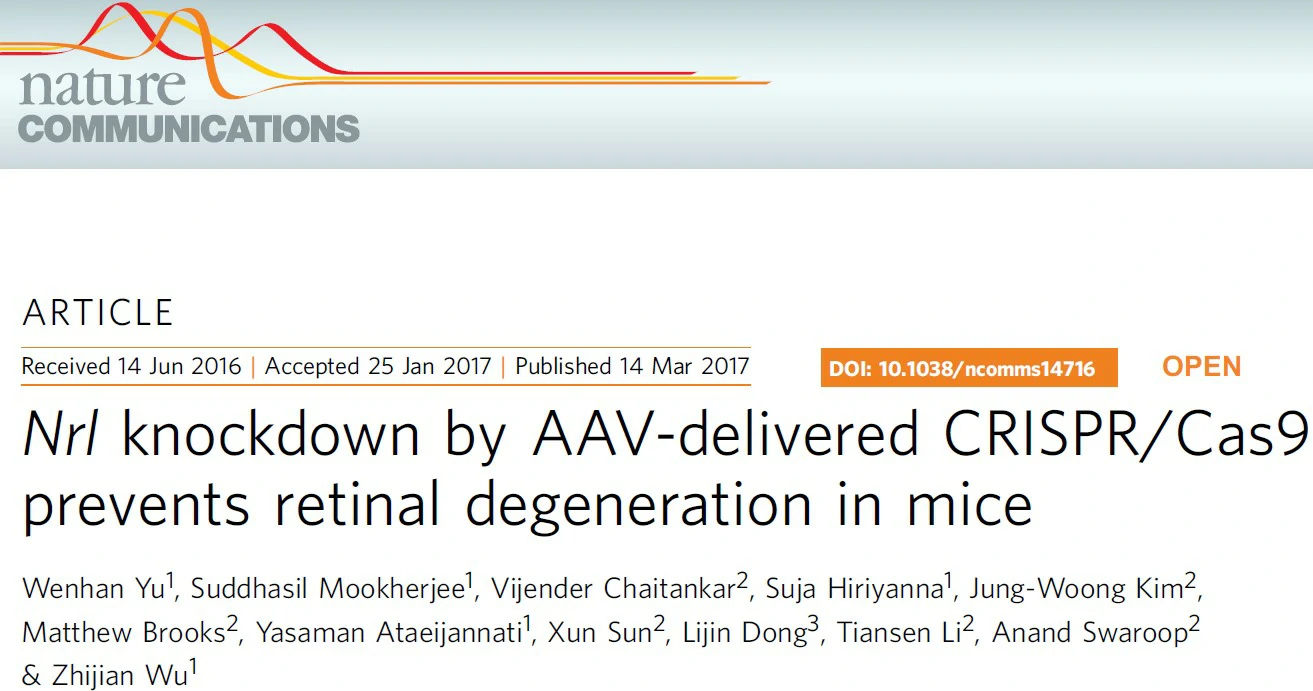Nature Communications: Retinitis pigmentosa (RP) patients may benefit from AAV mediated gene therapy
Introduction: Retinitis pigmentosa (RP) characterized as retina degeneration is one of the major causes for inherited blindness, which can occur in one of four thousand babies. Most of RP show rod photoreceptor dysfunctions induced by gene mutations, which can further trigger loss of cone photoreceptors and then result in blindness. To date, there is no effective therapy available for RP patients. Recently, a group headed by Dr. Zhijian Wu (Ocular Gene Therapy Core, National Eye Institute, NIH, USA) has utilized AAV (adeno-associated virus) mediated tissue-specific CRISPR/Cas9 delivery to target Nrl gene and consequently improved rod survival and prevented cone loss, showing promising insights for RP gene therapy.
These findings were published in the journal of Nature Communications as a title of “Nrl knockdown by AAV-delivered CRISPR/Cas9 prevents retinal degeneration in mice”. In this study, Wenhan Yu et al. chose CRISPR/Cas9 mediated gene targeting to inactivate Nrl gene in mice. Compared with conventional gene knockdown techniques such as antisense oligonucleotides, ribozymes and RNA interference, Cas9 mediated gene targeting can conduct operation on genomic DNA and show stable and complete gene knockout results. In addition, Nrl gene has been proved as a potential target for RP therapy. Previous studies showed that genetic ablation of Nrl in adult rods changed rod fate determination and acquired cone characteristic in retina degeneration model induced by rhodopsin KO. However, whether this approach could be applied on AAV mediated gene therapy and available to other retina degeneration models except rhodopsin mutation, remains unknown. This team established an AAV-based CRISPR/Cas9 system to target Nrl gene in postmitotic photoreceptors, and demonstrated that inactivation of Nrl in rods indeed acquired cone-like characters and prevented cone loss in three independent retina degeneration models. In a whole, these discoveries strongly suggest that CRISPR/Cas9-mediated NRL disruption in rods by AAV delivery may be a promising therapy means for RP patients, providing guidance for further clinical trials.
References
1. Retinitis pigmentosa.
2. Development and applications of CRISPRCas9 for genome engineering.
3. Reprogramming of adult rod photoreceptors prevents retinal degeneration.
4. Nrl knockdown by AAV-delivered CRISPR/Cas9 prevents retinal degeneration in mice.






